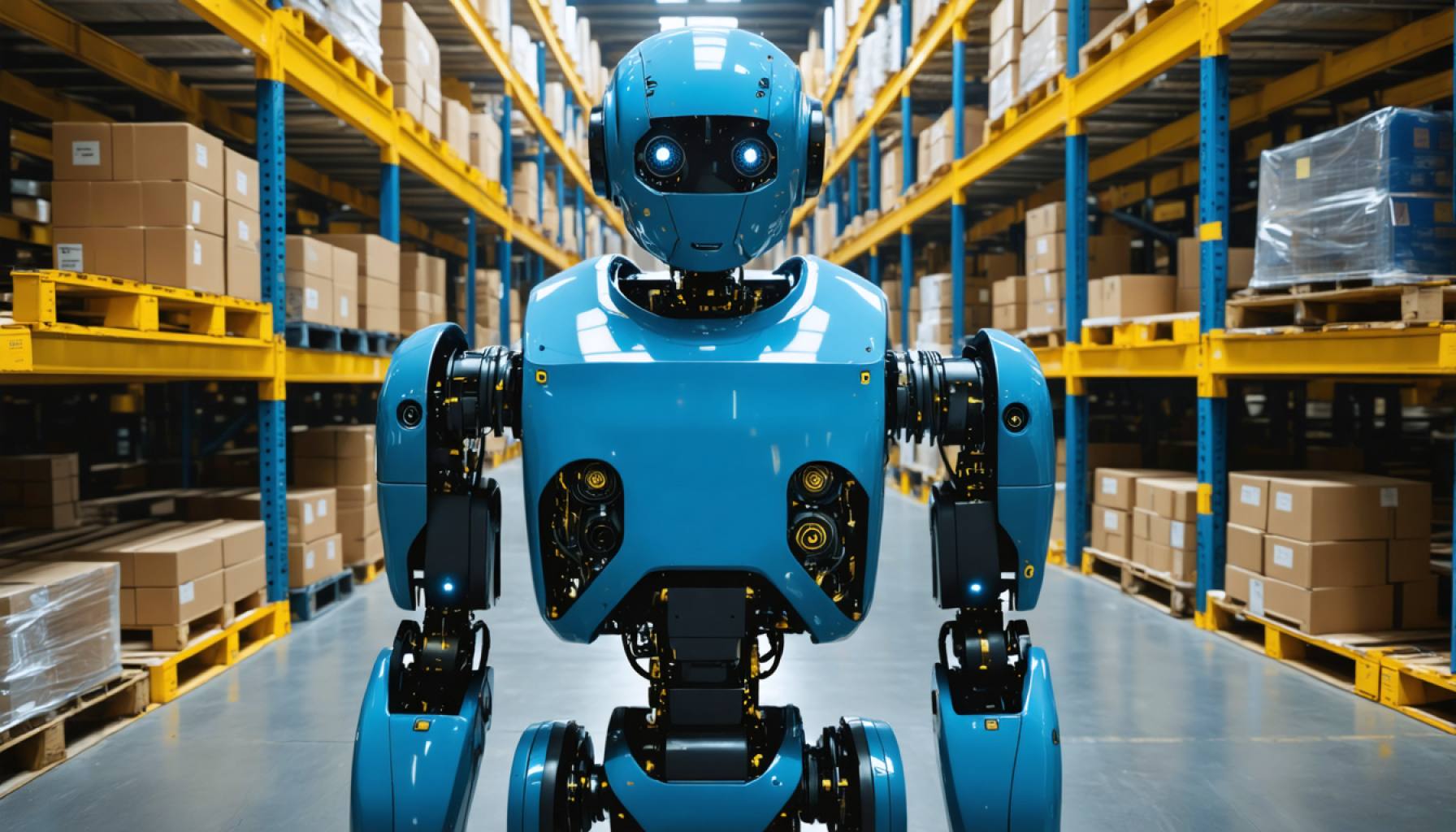- Agility Robotics, based in Oregon, is on the verge of closing a $400 million funding round to advance its humanoid robot, Digit.
- Digit, a 5-foot-9-inch bipedal robot, is designed to enhance warehouse operations by navigating environments and handling up to 35 pounds.
- Equipped with sensors, cameras, and LiDAR, Digit integrates seamlessly into workflows, addressing labor shortages and boosting logistics efficiency.
- Strategic enhancements include expanded battery life, advanced docking, and redesigned limbs for improved motion and safety in collaborative settings.
- Industry competition from companies like Tesla and Apptronik is driving innovation in humanoid robotics, pushing the sector to new heights.
- The rise in funding and interest signals a pivotal moment for the industry, with humanoid robots poised to transform diverse sectors beyond warehouses.
Tucked away in the scenic landscapes of Oregon lies a powerhouse of innovation: Agility Robotics, the company poised to revolutionize the robotics industry with their striking humanoid robot, Digit. In a move set to significantly accelerate their mission, Agility Robotics is gearing up to close an impressive $400 million funding round. This influx, guided by WP Global Partners and featuring heavy hitters like SoftBank Group Corp, is supercharging their bid to bring Digit into the mainstream of warehouse operations.
Imagine a robot, standing 5 feet 9 inches tall, navigating the complex and bustling environments of modern warehouses with the grace and agility of a skilled human worker. That’s Digit, a bipedal marvel designed not just to mimic, but to enhance, human capabilities. Covered in sensors and employing cutting-edge cameras and LiDAR technology, Digit sets a new standard for automation with the ability to handle objects weighing up to 35 pounds, deftly integrating into existing workflows. This remarkable feat addresses labor shortages and boosts the efficiency of logistics operations—an alluring prospect for companies like Amazon and Spanx, which are already deploying Digit to streamline processes like tote consolidation.
The strategic enhancements to Digit, funded by previous investments, are nothing short of revolutionary. With expanded battery life and advanced autonomous docking, Digit can work longer without human supervision. Its redesigned limbs expand the robot’s range of motion, making complex tasks a breeze. Moreover, these features fortify Digit’s presence in collaborative environments, ensuring safety and effectiveness as it works alongside humans.
The ramifications of Agility Robotics’ endeavors extend far beyond their immediate applications. As industry giants pour resources into humanoid robotics, the resulting competition drives innovation to staggering heights. Take Tesla, with its ambitious Optimus robot, or Figure AI, a startup committed to crafting general labor solutions through advanced machine learning. Meanwhile, Apptronik, another rising star, eyes the immediate commercialization of their aptly named humanoid, Apollo, targeting sectors like logistics and retail.
This burgeoning interest and investment reflect a pivotal moment for the humanoid robotics industry at-large. Advancements in artificial intelligence have propelled these robots into realms once reserved for science fiction, reshaping jobs, enhancing productivity, and envisioning entirely new operational paradigms.
Agility Robotics’ substantial funding is a harbinger of what’s to come. As they push the boundaries of what robots can achieve, this momentum is charting a new course for industries worldwide. The potential that humanoid robots hold in redefining not only warehouses but also diverse sectors, from manufacturing to services, remains a thrilling prospect on the horizon. The future of robotics isn’t just about faster machines; it’s about reimagining the fabric of the workforce. And as Digit steps confidently into this role, the world gets a glimpse of what tomorrow might bring.
The Future of Warehouse Automation: How Humanoid Robots Like Digit Are Changing the Game
An Overview of Digit: The Next Evolution in Robotics
Agility Robotics is placing Oregon on the map as a hub of innovation with its humanoid robot, Digit. Standing at 5 feet 9 inches, Digit is engineered to operate in the complex environments of modern warehouses. With its ability to lift objects weighing up to 35 pounds and seamlessly integrate into existing workflows, Digit is not just mimicking human actions; it’s enhancing them.
Advanced Features and Specifications
Digit is equipped with a suite of sensors, cutting-edge cameras, and LiDAR technology, setting a new standard in warehouse automation. Its updated design includes:
– Enhanced Battery Life: Enables longer hours of operation without needing constant human intervention.
– Advanced Autonomous Docking: Facilitates smoother transitions and better efficiency when charging or performing specific tasks.
– Improved Limb Dexterity: Extends its range of motion, allowing it to perform more complex tasks effortlessly.
With these features, Digit is perfectly suited to address labor shortages while boosting logistics efficiency. Companies like Amazon and Spanx have already integrated Digit into their operations for tasks such as tote consolidation.
Industry Trends and Market Forecasts
The humanoid robotics industry is experiencing explosive growth, fueled by significant investments and technological advancements. According to a report by Grand View Research, the global robotics market size is expected to reach USD 189.36 billion by 2030, with humanoid robots playing a significant role in this expansion.
– Competition and Innovation: Innovations are driven by fierce competition among industry giants like Tesla and startups like Figure AI and Apptronik. This competition is speeding up the development and commercial deployment of humanoid robots across multiple sectors.
Real-World Use Cases
Humanoid robots like Digit are transforming more than just warehouse environments. Potential applications include:
– Manufacturing: Enhancements in productivity and safety in various assembly tasks.
– Healthcare: Assistance with patient interaction and logistics.
– Retail: Automating inventory management and customer service.
Pros and Cons
Pros:
– Increased Efficiency: Robots can operate for extended periods without fatigue.
– Safety Improvements: Reduce the need for humans to perform hazardous tasks.
– Cost Savings: Long-term savings on labor costs and increased operational efficiency.
Cons:
– Initial Investment: High cost of purchase and implementation.
– Integration Challenges: Requires rethinking workflow integration and employee training.
– Potential Job Displacement: Concerns about robots replacing human jobs.
Overcoming Challenges and Controversies
While humanoid robots present numerous benefits, they also pose challenges, particularly concerning job displacement and ethical considerations. Efficient workforce retraining programs and transparent communication with employees are essential to mitigate these issues.
Actionable Recommendations
– For Businesses: Consider initial pilot programs to test and integrate humanoid robotics into existing operations.
– For Employees: Seek training in robotics and automation to stay competitive in the evolving job market.
– For Investors: Humanoid robotics present a promising investment opportunity given the projected market growth and innovation potential.
Conclusion: Charting a New Course for the Workforce
As Digit and its counterparts edge closer to mainstream deployment, they promise to reshape industries beyond warehouse operations. By reimagining the workforce, humanoid robots like Digit not only usher in technological advancements but also herald a new era in how we perceive work and productivity.
For further insights and developments in robotics, visit Agility Robotics and stay updated with the latest trends and technologies in this dynamic field.









